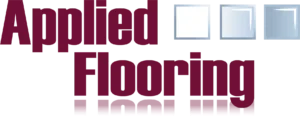A
Acid Etch: A diluted acid, such as muriatic (hydrochloric) or phosphoric acid is poured on the floor to remove the cement laitance or to remove the top surface to create a rough profile.
Anti-Slip Coating: A floor coating with aggregate (sand) embedded in it such that the aggregate is partially exposed to provide a rough profile finish.
B
Blast Pattern: The pattern created by the passing of a blast machine over a floor.
Brush Blast: The lightest uniformly blasted floor pattern that is acceptable for any coating application.
C
Chemical Preparation: Preparation by stripping, cleaning or etching with a liquid chemical in a concentrated or diluted form. Commonly used chemicals include acids (muriatic, phosphoric), alkaline (soap or detergent), solvents (xylene, acetone) or paint strippers.
Control Joint or Saw Cut: The cut made into a concrete slab within 24 hours of pouring the slab, in order to allow for shrinkage. This cut is usually not a moving joint, and can be filled and covered once the slab is cured and stabilized (usually a year or two after placement).
Cove Base or Wall Base: An overlay application continuing from the floor up the wall at a constant height, with a concave radius at the floor–to-wall joint. Height is usually between 3 and 8 inches. The wall base is usually tied into a zinc or plastic cap.
Cove: A concave rounded finishing of the floor-to-wall joint.
Cratering or Pitting: This can occur on the surface of a coating when air escapes from the surface, creates a foam bubble, and cures. When the cured bubble is broken, a crater type effect with a sharp rim remains.
Curtaining: A tarp or curtain temporarily hung to protect equipment, product, or rooms from dust created during floor preparation.
D
Dry Grinding: When a grinder is used without water. Usually the grinder has a dust collection unit to control the spread of dust.
E
Exposed Aggregate: This occurs when a concrete floor becomes worn and aggregate material becomes visible.
F
45 degree Cove: This term applies to coving that is applied flat at a 45 degree angle into the floor-wall corner.
Feather Edge: When an overlay terminates on a floor surface without being tied into the surface by an edge key.
Fish Eyes: A type of surface separation of a floor coating. These occur when the liquid application pulls away from a speck of dirt or when applying over an oily or contaminated surface. The resulting appearance resembles fish eyes, fish scales, snake skin, etc.
Flooding: An application technique that involves pouring a coating to a thickness that allows it to flow to a smooth, level finish.
Floor Machine/Floor Maintainer: A machine with one rotary head with a 15” to 18” diameter sanding disc or plate attached. Primarily used for sanding or screening an existing coating or concrete surface.
Floor Sander: Drum type belt sander used for sanding wood floors.
G
Grinding: A set of stones or a diamond content disc rotates against the surface of a floor to remove or level the top layers of the surface.
Grout: A fine epoxy-filler mix used to fill holes and cracks in the floor before a coating is applied.
H
Hiding Ability: The ability of a pigmented coating to provide a uniform colour density over a dark or discoloured surface.
High Build Coating: Coatings that are applied at a thickness of 20-100 mil, or coatings that have a solids content of at least 90%.
K
Keying Edges: Using techniques such as chipping, saw-cutting, scarifying, beveling or a combination of to tie the edges of an overlay into the surface of a floor. This provides a sound transition to the overlay.
M
Mechanical Preparation: Any preparation requiring impacting or abrading a surface to physically remove part of the surface.
O
¼ inch or 6mm: A common thickness of overlay.
1/8 per foot: Refers to the drainage slope of a floor surface, and indicates a 1/8th inch per foot change in the height of the floor surface. This is the accepted minimum for floor drainage in the food industry. ¼ inch per foot is the accepted slope for automatic flow.
Orange Peel Effect: A coating surface texture that resembles the surface of an orange.
Overlay: The sand-filled resin mix that is trowel applied to the surface of a floor to a thickness of 1/8th to 5/8th of an inch. Also referred to as topping, trowel-down, matrix, or surfacer.
P
Patch: The replacement of a broken overlay or coating, usually less than 50 sq. ft. in area.
Pigment Separation: This can occur in coloured coatings consisting of two or more pigments, where one pigment rises to the surface and other pigments remain suspended.
Pinholes: A tiny hole created when air escapes from the surface of a coating and the coating does not flow back into the void area.
R
Ramp: The sloped transition from one floor height to another or between adjoining floor slabs.
Re-slope: To change the entire surface of an existing floor to introduce or remove a slope, often for drainage purposes.
Rough Blast: The coarsest profile produced by a blast machine, for heavy surface removal.
Rub Up: The closing of pores (honey comb) on a vertical cast-in-place (formed) concrete surface. This is usually accomplished by rubbing a fine slurry-type mix over the concrete surface.
S
Sagging: The result of applying a coating too heavily to a vertical surface (wall or wall base) which causes the coating to run down the surface.
Scarify: Mechanical impaction (chipping) of a concrete surface by rotary application of steel cutters.
Screed Box: A steel box with an open top and height-adjustable bottom opening that allows an overlay mix to be applied at a uniform thickness.
Screen: To sand a coating or sealer using a floor machine with a grit screen attachment.
Seed: To broadcast dry sand or grit over an uncured (wet) floor coating to provide an anti-slip finish.
Shadowing: A dark or discoloured area that is visible through a pigmented coating.
Shot Blast: Mechanical preparation by impacting steel shot onto a floor surface at a high speed.
Solvent Wash: Removes surface oil from a concrete surface to establish a superior bond between surface and coating.
U
Underlay: Grout mix with a high ratio of filler, used to fill in large holes, re-slope, create ramps, etc., before the application of an overlay or floor coating.
Wet Grinding: Grinding with water flowing onto the point of grinding, or grinding with the floor surface flooded.

